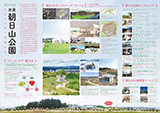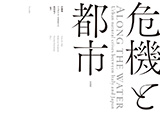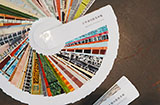Works
Books, Dissertations and Practical Architecture


Architecture:
Noriko Matsuda have been collaborated with Architects and landscape architects since 2014. The team have applied for two competitions; both of which the team won the first prize. These projects are currently ongoing - the Asahiyama Park in Himi started in 2014, the Aobayama Park and the Park Center in Sendai started in 2017.
Books:


- Noriko MATSUDA, “Saitama: A Narrative History of the Land as a Suburb of Tokyo”, Ed. Rinpei MIURA and Toru TAKEOKA, Whereabouts of the transforming city? : City criticism with compound eyes, Tokyo: Bunyusya, 2020.
- Noriko MATSUDA, “Walking the Folds of Shibuya Maruyama-cho”, Shibuya's Secrets: Understanding from 12 perspectives, Tokyo: PARCO publishing, 2019.
- Noriko MATSUDA, “A Scenario of Formation Processes of Machiya (Historical urban housing in Japan)”, Global History of Architecture 15 Lectures, Tokyo: Shokokusya, 2019.
- Ed. Takeshi ITO, Federico SCARONI and Noriko MATSUDA, Along the Water: Urban Natural Crises between Italy and Japan, Tokyo: Sayusha, 2017 (English/Japanese).
- Ed. Michio ISHIKAWA, Tomohiko TAKAYANAGI, Noriko MATSUDA and Takashi KURIKI, Atami Onsen-shi, Shizuoka: Atami City, 2017.
- Noriko MATSUDA, Ehagaki-no-Beppu (Beppu Hot Spring Town, the history and Image of the city: Restored from Picture Postcards in the First Half of the 20th Century), Tokyo: Sayusha, 2012.
Recent essays:
- Noriko MATSUDA, "Domus: Co-construction Threshold", Book guide to considering pandemic, Gendai Shiso (Revue de la pensée d'aujourd'hui), Tokyo: Seidosya, 2020.
- Noriko MATSUDA, "Habitat Building History Study Manifesto", Climate Change, Gendai Shiso (Revue de la pensée d'aujourd'hui), Tokyo: Seidosya, 2020.
- Noriko MATSUDA, "Travelogue to Mythical Map”, Map world, Eureka, Tokyo: Seidosya, 2020.
- Noriko MATSUDA, "Bones of a Cat", Animal life, Subaru, Tokyo: Syueisya, 2020.
- Noriko MATSUDA, “A Sketch for Habitat Building History Study”, 10+1 Website, Tokyo: LIXIL publishing, 2019.
- Noriko MATSUDA, “Towards the History of Postwar Space”, Website of Research on Spatiality of Post WWII Japan, Tokyo: Research on Spatiality of Post WWII Japan Working group of Architectural Institute of Japan (AIJ), 2019.
- Noriko MATSUDA, "Narratives by Old Women: From the Town of Whaling”, Ed. Yosiro Sakamoto, Mele Archipelago, Honolulu: Yosiro Sakamoto, 2018.
- Noriko MATSUDA, "We, Sent in the Earth to be Born”, Place, Art, Consciousness, Meiji University, 2018.
- Noriko MATSUDA, "Magma and Tomb", Blessings of volcano, Subaru, Tokyo: Syueisya, 2018.
- Noriko MATSUDA, "Eiffel Tower", SPINNING BARTHES at 100-year-old Roland Barthes, Subaru, Tokyo: Syueisya, 2016.
- Ed. Noriko MATSUDA et al., “Urban History Towards Territorial History”, Journal of Architecture and Building Science, Tokyo: Architectural Institute of Japan (AIJ), 2015.
- Noriko MATSUDA, “Towards Understanding the History of Terrain Settlements: Through a Case Study of Water’s Edge Settlements in the Kambara Plains”, Comparative Studies on Territory, City and Architecture in History, Proceedings of round table meeting with the University of Tokyo and Université de Toulouse II Le Mirail and FRA.M.SPA, Toulouse, France, 2012 (English).
- Noriko MATSUDA, “Floodplain – Marsh – Lagoon: Water Management Systems and Settlements at the Water’s Edge in Niigata from the 16th to 19th Centuries”, Water Risk and Climate and Human Settlements: Architectural and Environmental Cultural Landscapes and Sustainable Habitats Design-, Proceedings of round table meeting with the University of Tokyo and Università degli Studi di Firenze, Florence, Italy, 2012 (English).
- Noriko MATSUDA, “Water in Early Modern Atami: Soft Technology of Hot Spring Town”, Urban Territory – Low Land – Water: Comparative Urban Study on History of Infrastructure, Proceedings of round table meeting with the University of Tokyo and Università di Pisa, Pisa, Italy, 2011(English).
: Early research was on the history of the formation of Japanese hot spring towns. The doctoral thesis was on urban history associating space and social history of two Japanese largest hot spring cities, Beppu and Atami.
Since 2011, researches were often related to two main themes: "Human History at water's edge" and "Considering architecture and cities throughout terrain, geology and earth conditions”.
HBH's visions and manifests begin to be written since 2019.
Some of the articles contain criticisms against anthropocentrism.
Others:








-Short Movie Series: Finding the History of “Sassa yo Yassa”
"Sassa yo Yassa. Japanische Tänze" was published in Berlin 1913.
The Author of the book was Bernhard Kellermann (1879-1951), a German writer who became a million-seller novelist. Illustrations for the essay were drawn by Karl Walser (1877-1943). Walser was a Swiss painter and was a brother of the famous poet Robert Walser (1878-1956).
Kellermann and Walser came to Japan in the early 20th century and published their experiences of stay as two books: "Sassa yo Yassa” and "Ein Spazier Gang in Japan" (1910).
They loved Miyazu, a small seaside town in Kyoto prefecture.
Miyazu is a many-sided town. It appears as a castle town, a port town, a fisherman’s town, and a geisha town. There were also many traveling entertainers who are lost these days. Numbers of old festivals are also held here. The town has a picturesque place Amanohashidate. It is a sand skewer made into a myth: the ladder connecting the earth to the heaven has fallen and became Amanohashidate.
The whole volume of "Sassa yo Yassa" and one-third of "Ein Spazier Gang in Japan" was on things that happened in Miyazu during their stay.
Our research team produced document movies following their footsteps in Miyazu.
vol.1 “Shin’hama” 2016/HD/28min.
vol.2 “Fisherman and Festivals” 2017/HD/40min.
vol.3 “Sea and Myth” 2018/HD/35min.
Collaborative artist: Yohei KOGI, Keijiro SUGA, Tatsuki HAYASHI, Tenko IMA, Mio MATSUDA, Okaeri Sisters, Kenji USHIKUBO and others
Collaborators: Miyazu City, Miyazu Chamber of Commerce, Residents of Miyazu, Mari TANAKA, Students of Matsuda Lab, and others
-Color Sample of Villages

This project focused on the color of the house to record and memorize the current scene of villages with a traditional livelihood.
The first work has taken place at the seaside village in the Kii Peninsula. Each village in the peninsula has a unique living culture and spatial character. The villages have traditional wooden houses with colorful paints and tiled exterior walls that are rarely seen in Japan.
A reason the residents or painters chose the color here in colorful villages is filled with wonder.
These colors have transitioned through the test of time and through the life of residents. Colors have changed due to the sea breeze, rain, or ultraviolet rays from the sun. The current color no longer has a shiny reflection that fresh paint has.
Colors vaguely flicker and blink in front of our eyes at the narrow alleys of the village.
We have captured these colors or moments and printed in a format of a color sample book.
Collaborative artist: Tomohiko OGAWA
